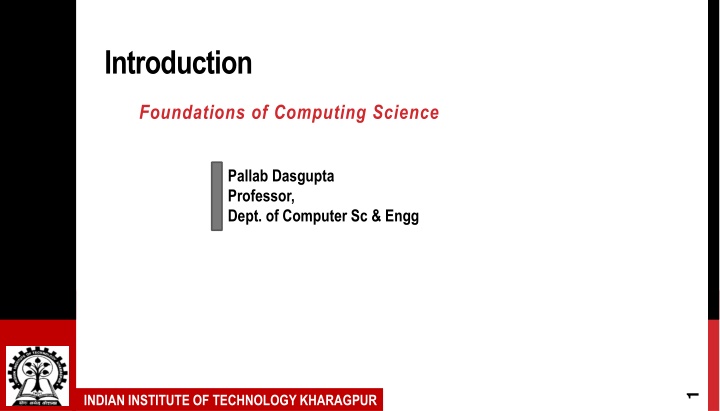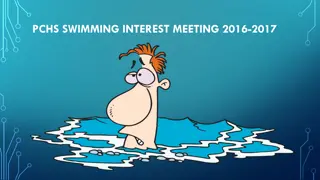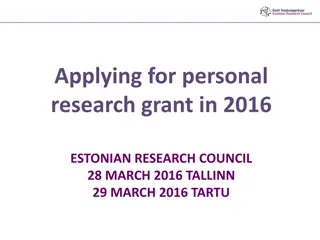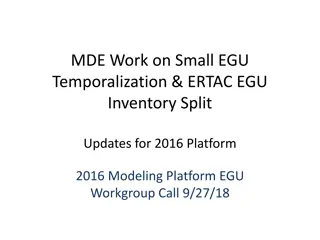
Foundations of Computing Science | Overview by Professor Pallab Dasgupta
Explore the foundations of computing science as discussed by Professor Pallab Dasgupta at the Indian Institute of Technology, Kharagpur. Dive into topics like discrete structures, logic, languages, automata theory, computability, computational complexity, and more. Discover recommended books for further study and gain insights into foundational concepts in computer science.
Download Presentation

Please find below an Image/Link to download the presentation.
The content on the website is provided AS IS for your information and personal use only. It may not be sold, licensed, or shared on other websites without obtaining consent from the author. If you encounter any issues during the download, it is possible that the publisher has removed the file from their server.
You are allowed to download the files provided on this website for personal or commercial use, subject to the condition that they are used lawfully. All files are the property of their respective owners.
The content on the website is provided AS IS for your information and personal use only. It may not be sold, licensed, or shared on other websites without obtaining consent from the author.
E N D
Presentation Transcript
Introduction Foundations of Computing Science Pallab Dasgupta Professor, Dept. of Computer Sc & Engg 1 INDIAN INSTITUTE OF TECHNOLOGY KHARAGPUR
Comments on Alan Turings Paper "On Computable Numbers, with an Application to the Entscheidungs Problem." seen, then proceeds to show I haven't quite followed the needlessly complicated formalism that there are numbers that it can't compute. This is a bizarre paper. It begins by defining a computing device absolutely unlike anything I have numbers are too big to be represented in the machine, in which case the conclusion is obvious, or they are not; in that case, a machine that can't compute them is simply broken! As I see it, there are two alternatives that apply to any machine that will ever be built: Either these number computable by a function that is, by applying the four operations a number of times can be computed by any modern tabulating machine since these machines unlike the one proposed here with its bizarre mechanism have the four operations hardwired. It seems that the "improvement" proposed by Turing is not an improvement over current technology at all, and I strongly suspect the machine is too simple to be of any use. Any tabulating machine worth its rent can compute all the values in the range it represents, and any change the title accordingly. If the article is accepted, Turing should remember that the language of this journal is English and Source: http://www.fang.ece.ufl.edu/reject.html 2 INDIAN INSTITUTE OF TECHNOLOGY KHARAGPUR
Curriculum Discrete Structures -- Sets, Relations and Functions; Proof Techniques, Algebraic Structures, Morphisms, Posets, Lattices and Boolean Algebras. Logic -- Propositional Calculus and Predicate Calculus, Satisfiability and Validity, Notions of soundness and completeness Languages AND Automata Theory -- Chomsky Hierarchy of Grammars and the corresponding acceptors, Turing Machines, Recursive and Recursively Enumerable Languages; Operations on Languages, closures with respect to the operations. Computability -- Church-Turing Thesis, Decision Problems, Decidability and Undecidability, Halting Problem of Turing Machines; Problem reduction (Turing and Mapping reduction). Computational Complexity: Time Complexity -- Measuring Complexity, The class P, The class NP, NP-Completeness, Reduction, co- NP, Polynomial Hierarchy. Space Complexity Savitch s Theorem, The class PSPACE. 3 INDIAN INSTITUTE OF TECHNOLOGY KHARAGPUR
Books 1. Michael Sipser -- Theory of Computation, Cengage Learning India. 2. J.P. Trembley and R. Manohar -- Discrete Mathematical Structures with Applications to Computer Science, McGraw Hill Book Co. 3. John E. Hopcroft and J.D.Ullman -- Introduction to Automata Theory, Languages and Computation, Narosa Pub. House, N. Delhi. 4. H.R. Lewis and C.H.Papadimitrou -- Elements of the Theory of Computation, Prentice Hall, International, Inc. + Additional materials made available during the course. 4 INDIAN INSTITUTE OF TECHNOLOGY KHARAGPUR
Set Theory A set is a group of objects represented as a unit Example: Set of odd positive integers less than 50 and divisible by 5 { 5, 15, 25, 35, 45 } Let A and B be two sets. A is a subset of B (A B) if every element of A is also an element of B, i.e., x A => x B A is a proper subset of B (A B) if A is a subset of B and A B Example: A B, where B = set of odd positive integers less than 50 & divisible by 5 {5, 15, 25, 35, 45} A = set of odd positive integers less than 50 & divisible by 15 {15, 45} Set Operations A B A B A B A B A B A Symmetric Difference (A B) DeMorgan s Law (A U B) = A B Complement ( ) Intersection (A B) Union (A U B) Difference (A B) = (A B ) 5 INDIAN INSTITUTE OF TECHNOLOGY KHARAGPUR
Set Theory (contd) Notations N = Set of natural numbers Z = Set of integers [Z + = Set of positive integers] R = Set of real numbers [R + = Set of positive real numbers] Q = Set of rational numbers C = Set of complex numbers Power Set of A, P(A) is the set of all subsets of A A = { 1, 2 } then P(A) = { , {1}, {2}, {1, 2} }, Here is Null Set Cartesian Product of A and B (written as A B) is the set of all pairs where the first element is a member of A and the second element is a member of B Example: A = {1, 2} and B = {x, y, z}, Then, A B = {(1, x), (1, y), (1, z), (2, x), (2, y), (2, z)} 6 INDIAN INSTITUTE OF TECHNOLOGY KHARAGPUR
Function A function (or mapping) is an object that sets up an input-output relationship If f is a function whose output value is b when the input value is a, we write f(a) = b Let f(x1) = y1 and f(x2) = y2. If y1 y2, then x1 x2. The set of possible inputs to a function is its domain The set of outputs of a function is its range f is a function with domain D and range R is represented as, f : D R Example: Consider the function, f : {1, 2, 3, 4, 5, 6} The function f takes positive integers less than 7 and outputs the result modulo 3; i.e., f(n) = n%3 Domain of f is, D = {1, 2, 3, 4, 5, 6} Range of f is, R = {0, 1, 2} {0, 1, 2} 7 INDIAN INSTITUTE OF TECHNOLOGY KHARAGPUR
Relation A property whose domain is a set of k-tuples (A A A) is called a relation If k = 2 the relation is called a binary relation Example: less than (<) is a binary relation k number of As A binary relation R is an equivalence relation if R satisfies the following conditions: R is reflexive i.e., x, xRx R is symmetric i.e., x y, ( xRy => yRx) R is transitive i.e., x y z, ( xRy and yRz => xRz ) A binary relation R is a partial-order relation if R satisfies the following conditions: R is reflexive i.e., x, xRx R is anti-symmetric i.e., x y, ( xRy and yRx =>x y) R is transitive i.e., x y z, ( xRy and yRz => xRz ) 8 INDIAN INSTITUTE OF TECHNOLOGY KHARAGPUR
Graph An undirected graph is a set of points with lines connecting some of the points G = (V, E) where V is the set of vertices and E is the set of edges Number of edges incident at a particular node (v) is the degree [d(v)] of the node Example: G = (V, E), where Set of Vertices: V ={ v1,v2,v3,v4, v5 } Set of Edges: E ={ e1,e2,e3,e4,e5, e6 } Degrees: d(v1 ) = 2, d(v2 ) = 3, d(v3 ) = 3, d(v4 ) = 3 and d(v5) = 1 e1 v2 v1 e3 v5 e2 e5 e6 e4 v3 v4 9 INDIAN INSTITUTE OF TECHNOLOGY KHARAGPUR
Graph (contd) G is a subgraph of H if the nodes of G are a subset of the nodes H, and the edges of G are the edges of H on the corresponding nodes Example: Subgraph H = (VH,EH) where; VH = {v2, v3, v4, v5} and EH = {e3, e4, e5, e6} A path in a graph is a sequence of nodes connected by edges v1, v2, v3, v4, v5 is a path A path is a cycle if it starts and ends in the same node v1, v2, v4, v3 , v1 is a cycle A graph is a tree if it is connected and has no cycle e1 v1 v2 e3 v5 e2 e5 e6 e4 v3 v4 Tree 10 INDIAN INSTITUTE OF TECHNOLOGY KHARAGPUR
Graph (contd) If a graph has arrows instead of lines, the graph is called a directed graph Edges from vertex i to vertex j are represented as pairs (i, j) Out-degree [d+(v)]: number of arrows pointing from a particular node (v) In-degree [d-(v)]: number of arrows pointing to a particular node (v) Example: G = (V, E) where, Set of vertices, V = {1, 2, 3, 4, 5} Set of directed edges, E = {(1,2), (1,5), (2,1), (2,3), (2,4), (5,3), (5,4)} In-degrees and Out-degrees, d+(1) = 2; d-(1) = 1 d+(2) = 3; d-(2) = 1 d+(3) = 0; d-(3) = 2 d+(4) = 0; d-(4) = 2 d+(5) = 2; d-(5) = 1 2 1 3 5 4 11 INDIAN INSTITUTE OF TECHNOLOGY KHARAGPUR
Boolean Logic It is a mathematical system built around two values TRUE and FALSE The value TRUE and FALSE are called Boolean values and are often represented by the values 1 and 0 Basic operations are as follows: Negation (~) ,Conjunction ( ) ,Disjunction ( V ) Truth Table of Basic operations: Conjunction Disjunction a 0 0 1 1 b 0 1 0 1 a b 0 0 0 1 a 0 0 1 1 b 0 1 0 1 a V b 0 1 1 1 Negation a 0 1 ~a 1 0 12 INDIAN INSTITUTE OF TECHNOLOGY KHARAGPUR
Boolean Logic (contd) Several other Boolean operations occasionally appear Exclusive-Or (XOR): P Implication: P =>Q ~P V Q Equality: P <=> Q (P => Q) (Q => P) Q (~P Q) V (P ~Q) ~(P <=> Q) Distributive law: P (Q V R) (P Q) V ( P R) P V (Q R) (P V Q) (P V R) [Dual] Commutative law: P V Q Q V P and Q R R Q 13 INDIAN INSTITUTE OF TECHNOLOGY KHARAGPUR







